- Administrator
- Albums and Singles
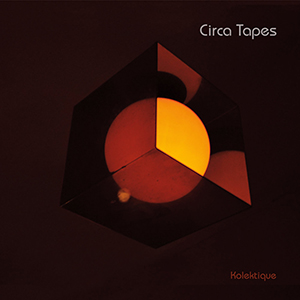 This solo project of Adam Killing (who also works as Kill Memory Crash) might only have released its second full-length record, but the multifaceted sound of Kolektique is that of an exceptionally well-developed artist. Drawing from a multitude of minimal synth sounds, he utilizes the expertly to create sparse, yet extremely catchy compositions.  While this is all well and good, the subtle production and attention to the smallest of sonic details is where this album especially shines.
This solo project of Adam Killing (who also works as Kill Memory Crash) might only have released its second full-length record, but the multifaceted sound of Kolektique is that of an exceptionally well-developed artist. Drawing from a multitude of minimal synth sounds, he utilizes the expertly to create sparse, yet extremely catchy compositions.  While this is all well and good, the subtle production and attention to the smallest of sonic details is where this album especially shines.
The instrumentation that makes up the bulk of this album is nothing too esoteric or unexpected:pulsing analog synths, stiff drum machines, and heavy vocal processing define most of the 10 songs on here.What especially drew me in, however, was the nuanced production on those standard sounds.For example, the simple synth sequence and drum program that drives "Adagio" (featuring guest vocals by Le Sprite) sounds rather by the numbers, but the depth and variation of those individual notes and beats is what makes it sound exceptional.Complex, layered synth notes, a fat, thudding kick drum and the metallic crunch of the snare gives the song a distinct (and wonderful) identity.
On "Magnus," Killing builds from a thumping bass drum that is pummeling at even reasonable volume levels, and the ghostly, haunting synth melodies that underscore the song give it a distinct and captivating feel.For "Forest Floors," it sounds as if he brings in a live bass guitar to underscore the piece, adding additional depth.Echoing synthesizer sweeps cut through consistently with metallic tinged voices appearing.Again, the sequences that drive the piece are structurally rather basic, but the tones that are being produced have a beautifully nuanced and unconventional sound to them.
"Diamonds" features again what sounds like a live bass lead that, when mixed with the healthy application of reverb, reminded me of Floodland era Sisters of Mercy, but with a much more synth pop bent.The piece itself is rather simple, with distant and cold vocals by Killing appearing throughout, but the echoing and reverb results in a heavier and oppressive, yet warm feeling throughout.The record’s conclusion, "S-Gerat," is a bit slower and has Killing working with a looser, less rigid approach to rhythm.The more dissonant elements and the complex melodies that are weaved in and out make for a different sounding, yet no less brilliant sounding song.
Circa Tapes' Kolektique may draw from many well tread electronic and synth-based music grounds, but the secret for its success lies heavily in its production.Adam Killing's subtle treatments and processing is not well lent to being described in terms of specific effects, but he makes even the most mundane bass drum sound a multilayered, physically tangible thump of noise.Beyond just fascinating sounding instrumentation, however, is a series of strong, memorable songs that are laden with catchy melodies and strong rhythms, with everything coming together in a beautiful, yet appropriately icy and robotic piece of music.
samples:
 
Read More
- Administrator
- Albums and Singles

Brannten Schnüre is an experimental dark folk group out of Würzburg, Germany. Christian Schoppik composed and played all the music, Katie Rich whispers, recites and sings. Together they make astoundingly beautiful folk with a rich instrumentation leaning towards the atonal spectrum. Instrumental wanderings stand alongside Nico-esque poetry tales. Christian plays the accordeon and in some songs guitar and flute. Inspired by hierophants like Nový Svět and David Jackman, solemn song fragments (a lot of old greek rembetiko-recordings) are modified and looped, with additional instruments and voices being integrated later on. His music has been described as "surreal folkcollage" and "German hauntology."
With the emergence of Schoppik's second project, a dada cabaret called Agnes Beil in 2010, Brannten Schnüre moved closer to the song structures of its frivolous sibling. The songs of Schoppik’s latest creation Sommer im Pfirsichhain are further accompanied by a female singing voice, lending the pieces the voluptuous quality of a stickily tense midsummer. Sommer Im Pfirsichhain (Summer In The Peachgrove) is the second part of a quartet of releases. The first being Aprilnacht which got released on Sic Sic Tapes last year. Part three Geträumt hab' ich vom Martinszug and part four will follow later.
Reference points are bands like Winter Family and Twinsistermoon. Music etched on folkloric, ritual elements transferred into the 21th century. Also worth mentioning is the hand-drawn artwork which is made by artist Gwénola Carrère.
More information can be found here.
Read More
- Administrator
- Albums and Singles
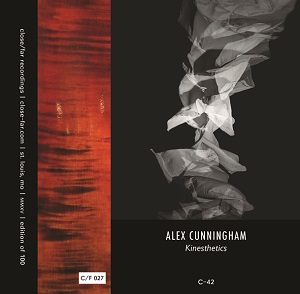 It wasn’t an accident of the imagination that inspired Pieter Bruegel the Elder to portray undead soldiers playing musical instruments in his Triumph of Death. Long before various religious sects decided that dance was an expression of unchecked desires, and therefore a temptation to be avoided, philosophers like Plato and Aristotle had connected music to moral incontinence. For Aristotle, the aulos, a double reed flute, was especially problematic because it prevented the player from speaking and because it drove men to irrational behavior. Bruegel, perhaps less concerned with prodigality than with mockery, chose a hurdy-gurdy, a violin, and drums for his skeleton warriors, but in the bottom-right corner of Triumph painted two oblivious nobles busy with a lute, neither panicking nor struggling against their fate. Their heads might as well be buried in the sand, their asses branded with the word "coward." Equally well known is Italian violinist and composer Niccolò Paganini who, because of his talents, his appearance or maybe out of jealousy, was rumored to have made a deal with Satan, securing him a legend and at least one painfully bad dramatic biography directed by Bernard Rose. That gets us back to the modern association of the violin with the devil, and to Alex Cunningham’s Kinesthetics, his debut solo violin album on the Close/Far label.
It wasn’t an accident of the imagination that inspired Pieter Bruegel the Elder to portray undead soldiers playing musical instruments in his Triumph of Death. Long before various religious sects decided that dance was an expression of unchecked desires, and therefore a temptation to be avoided, philosophers like Plato and Aristotle had connected music to moral incontinence. For Aristotle, the aulos, a double reed flute, was especially problematic because it prevented the player from speaking and because it drove men to irrational behavior. Bruegel, perhaps less concerned with prodigality than with mockery, chose a hurdy-gurdy, a violin, and drums for his skeleton warriors, but in the bottom-right corner of Triumph painted two oblivious nobles busy with a lute, neither panicking nor struggling against their fate. Their heads might as well be buried in the sand, their asses branded with the word "coward." Equally well known is Italian violinist and composer Niccolò Paganini who, because of his talents, his appearance or maybe out of jealousy, was rumored to have made a deal with Satan, securing him a legend and at least one painfully bad dramatic biography directed by Bernard Rose. That gets us back to the modern association of the violin with the devil, and to Alex Cunningham’s Kinesthetics, his debut solo violin album on the Close/Far label.
In his music, the St. Louis-based Cunningham makes no mention of the Great Adversary or any other power of darkness, but the name he chose for his debut gets right to the relationship between violin and movement, and more specifically to the sense of muscular effort and strength felt within the human body. Cunningham’s technique is, in one sense, muscular. He cuts and grinds at his instrument and digs into its strings, cutting off pitch and wrenching noise from them instead. As a result, the constant back-and-forth of the bow, the way it rocks and darts over the instrument, comes to the fore, until it is more the subject of the music than the melodies or even the instrument itself. On a song like "Drop Leaf," movement becomes a microscopic event, something that depends on tiny movements and minuscule physical properties, enough so that the violin is almost completely disguised. On "The Cage Knocked the Cloth Over" it breaks down even further, into waves of color and dispersing vapors.
Alex has a lighter touch too and finds space for more lyrical expressions in the same song, for small interludes that sound, for lack of a better term, classically executed. "Kinesthetics No. 2" and "Ida" both also contain similar passages, as do nearly all the other songs to varying degrees. Though improvised, Kinesthetics is clearly the product of someone who has been trained to play the instrument. Watching video of him on his website, it’s easy to see that Cunningham can work the fingerboard with precision, and his command of dynamics, including some wrist-breaking transitions from light and sonorous to blurred and taut, is on constant display.
The way he cobbles his performances together, from both traditional and extended techniques, is reminiscent of his collage work as a visual artist, which is formally meticulous and materially playful. That is another kind of movement Cunningham captures, between two spheres of musical expression. In the one, his playing might have once been called devilish, and certainly energetic, prone less to reason and more to feeling. In the other, he’s an improviser testing where and how different approaches fit, and whether they can stay within the same orbit for long. With Kinesthetics he posits one solution, which is to smear the two together until they cease to be at odds.
samples:
 
Read More
- Administrator
- Albums and Singles
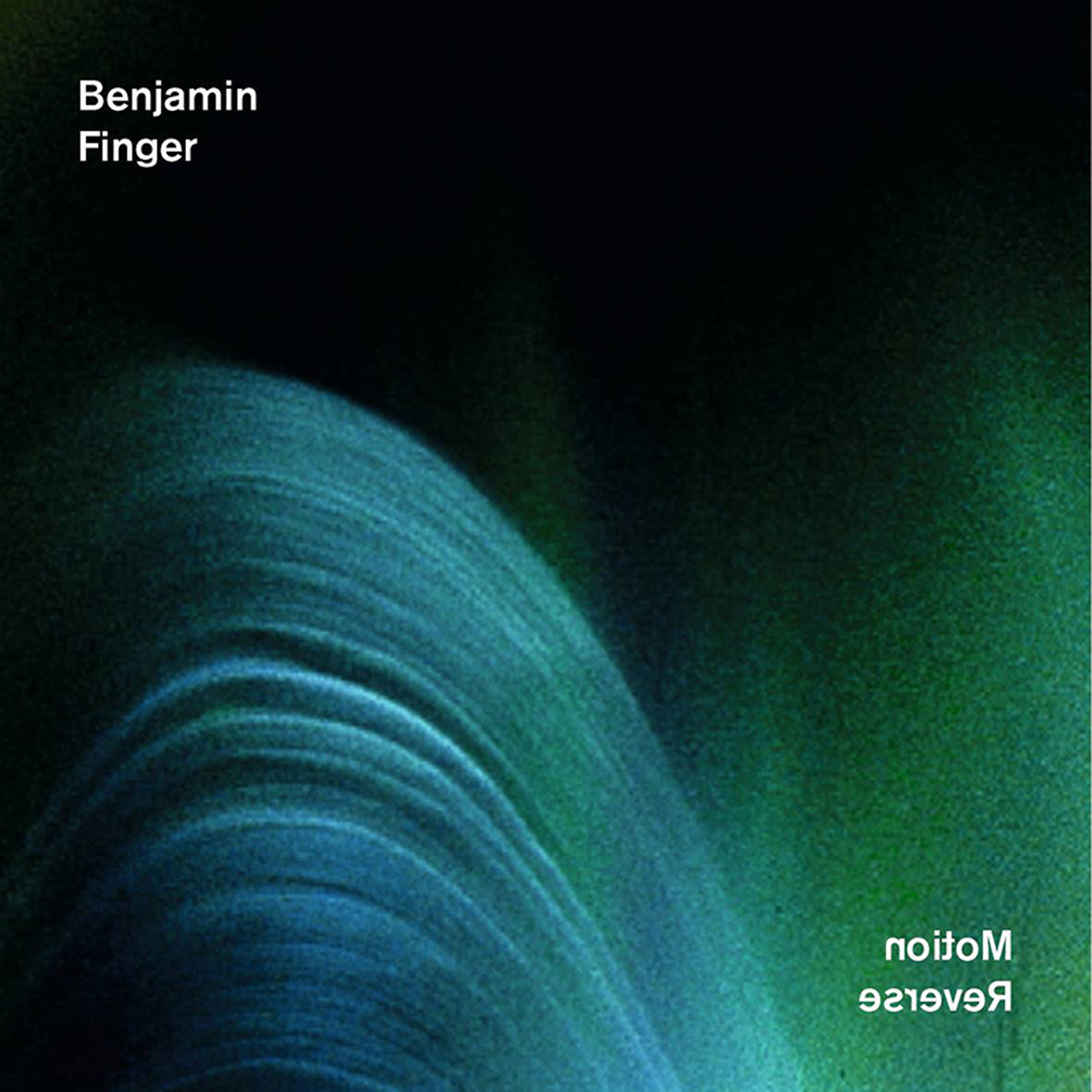 This has been an uncharacteristically prolific and creatively fertile year for Benjamin Finger, as he has released three very wonderful albums in three very different directions.  Thankfully, Finger’s characteristically warm, woozy, and hallucinatory aesthetic remains intact for all three, but he achieves that end with quite a variety of instruments and covers a lot of stylistic ground along the way.  The most notable of the three is arguably Motion Reverse, which can be viewed as a dubbier and more subdued continuation of Mood Chaser's deranged techno experiments.  Equally satisfying is Pleasurably Lost, which reprises and builds upon the dreamy psychedelia of past successes like 2009's Woods of Broccoli.  Amorosa Sensitiva, on the other hand, is a bit of a wild-card that unexpectedly dips its toes into dissonance, modern composition, free-jazz, and sundry other surprises.
This has been an uncharacteristically prolific and creatively fertile year for Benjamin Finger, as he has released three very wonderful albums in three very different directions.  Thankfully, Finger’s characteristically warm, woozy, and hallucinatory aesthetic remains intact for all three, but he achieves that end with quite a variety of instruments and covers a lot of stylistic ground along the way.  The most notable of the three is arguably Motion Reverse, which can be viewed as a dubbier and more subdued continuation of Mood Chaser's deranged techno experiments.  Equally satisfying is Pleasurably Lost, which reprises and builds upon the dreamy psychedelia of past successes like 2009's Woods of Broccoli.  Amorosa Sensitiva, on the other hand, is a bit of a wild-card that unexpectedly dips its toes into dissonance, modern composition, free-jazz, and sundry other surprises.
I am very pleasantly surprised at how well Finger has handled the transition into more beat-oriented music.  I loved 2014's Mood Chaser, but that seemed more like a wild, one-off "let’s see what I can get away with!" experiment than a sustainable new direction.  Motion Reverse proves me quite wrong though, as Finger has found a very appealing middle ground that somehow blends the best elements of Mood Chaser and his dreamier soundscape work to yield a vibrantly hallucinatory strain of warmly burbling, aquatic-sounding dub.  The pieces that best exemplify this new direction are "Frontal Waves," "Dubstore Light," and "Sunny Echoes," as Finger embellishes his delightfully wobbly and undulating pulses with an impressive host of crackling, squelching, panning and echoing studio flourishes and manipulated voices.  While those pieces and few other similar ones definitely comprise the meat of the album, there are also a few very enjoyable divergences scattered about.  I especially enjoyed the bookends: "Vocal Limited" and "Dream Logic."  "Vocal Limited" is a hypnotically skipping "locked groove" type of piece, but Finger lets himself go deliciously wild on the periphery, unleashing quite an impressive torrent of skittering and sputtering electronic chaos (albeit highly controlled chaos).  "Dream Logic," on the other hand, is a bit of a return to Finger’s past dream-drone comfort zone, but stretches out into a pleasantly swaying and pulsing slow-burner.  The languorously flanging groove of "Bright Exit" is yet another gem, but there are not any weak songs to be found at all on this amiable and understatedly fun excursion.
Samples:

Beats are nowhere to be found at all on Pleasurably Lost, Finger’s stellar return to his primary area of expertise: warm, abstract psychedelia.Like much of his recent beatless work, Lost is primarily built upon very simple and melodic piano motifs, but it is what Finger does around those motifs that makes his work so compelling and dinstinct.
The best description that I can think of is that it resembles an Erik Satie performance experienced through the filter of an especially wonderful dream: there is an elegant melodic thread that runs throughout everything, but it fades in and out of a beautifully warped and fragmented haze of disembodied voices, stuttering strings, beating hearts, burbling streams, bird songs, snatches of old records, shimmering electronics, and various bubbling swells of unrecognizable electronic weirdness.  The best song is arguably either the title piece or "Edges of Distortion" due their beautifully tender melodies, but Pleasurably Lost is best experienced as a complete album, as that is the only way to reap the full benefits of its otherworldly, immersive spell.  It is certainly a spell worth being beguiled by, as this album ranks alongside Woods of Broccoli as Finger's current zenith: he truly does everything exactly right this time around.The details are certainly great (melodies, textures, etc.), but the real brilliance of Pleasurably Lost is far more fundamental.For one, Finger is a true rarity among abstract psychedelic artists in that he is also a gifted songwriter–perhaps not in the conventional sense, given the smeared, kaleidoscopic unreality of the finished pieces, but it is easy to see that these ten pieces were songs at one point, as they all have hooks, a satisfying arc, and a knack for ending long before they overstay their welcome.Equally importantly, Finger has a unique gift for infusing his work with an endearing fragility and human warmth that is all his own.  This is an ideal place to start with Finger's sublime oeuvre.
Samples:
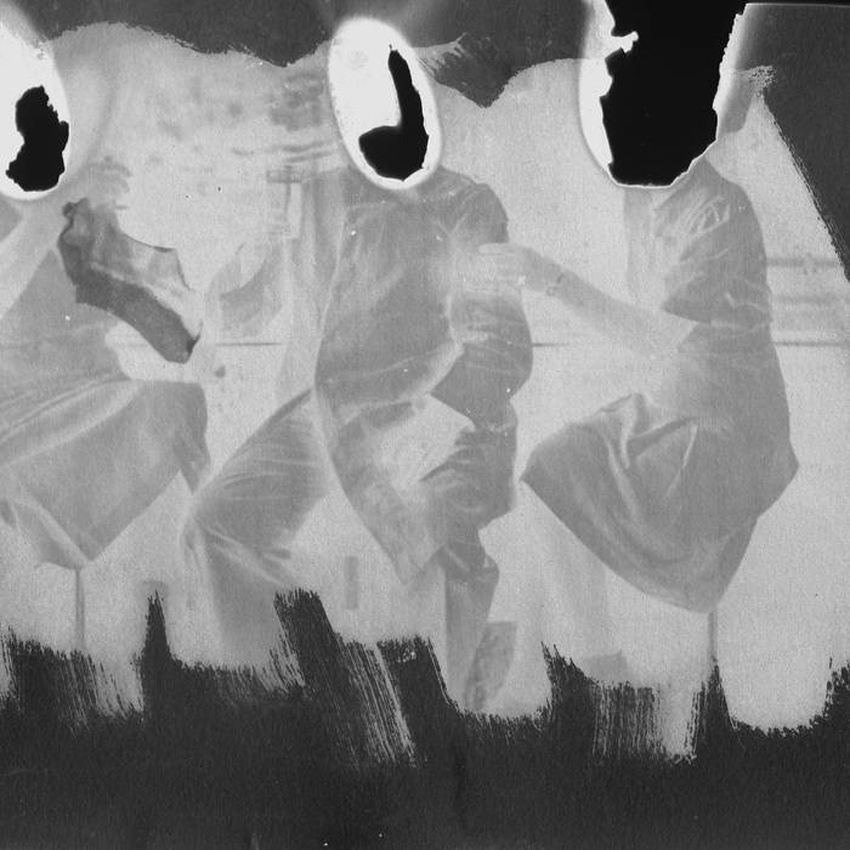
I do not know quite what to make of Amorosa Sensitiva, though I certainly like it.  It kind of feels like a clearing house for all of Finger's material that did not fit on any of his other albums, except that much of it is quite strong and super-producer James Plotkin was called in to master it all.  I suppose that means that it is deliberately and triumphantly kaleidoscopic by design.
In any case, Amorosa is stylistically all over the place.  The opening "Headspincrawl," for example, is 10-minutes of lazily warped, lushly gorgeous organ drone that gradually dissolves into a surreal haze of skipping vocal snippets, deconstructed techno tropes, and chopped-up classical music.  "When Face was Face," on the other hand, is a lovely and languorous cello piece dappled with twinkling synthesizer flourishes.  "Waltz in Clay" is a similarly elegant and melancholy cello work, but embellished with rippling piano arpeggios, subtle field recording textures, and gently hallucinatory studio effects.  Naturally, none of that prepared me at all for the clattering, noir-ish, and smoky saxophone eruption of "Whirlbrainpoolin." Nor was I prepared for both the free-jazz and guest saxophonist Are Watle to unexpectedly return in fractured form on the beautifully tender and masterfully warped piano interlude of "Bum Finger Notes" (to which Watle also contributes a wonderfully unconventional guitar solo).  Finally, the dreamy, shimmering ambiance of the brief closer "Darnskullgreyness" harkens back to Finger's classic earlier work, but enhances it with drifting snatches of violin and echoing, indistinct conversations.
Read More
- Administrator
- Albums and Singles
 I have admittedly become quite numbed to the power of Acid Mothers Temple in recent years, but that has certainly not stopped me from appreciating the unique talents of Kawabata Makoto.  If anything, I am weary of Makoto's primary outlet because their high-volume maximalism hides or precludes so many appealing facets and nuances of his artistry.  Thankfully, his solo albums–especially the ones on VHF–do no such thing and allow his exotic and eccentric vision to unhurriedly blossom without distraction (most of the time, anyway).  On this latest opus, Makoto adeptly blends echo-heavy Krautrock guitar, traditional Indian music, and his own distinctively lysergic tendencies to weave a sprawling fantasia of warped and trance-inducing drones.
I have admittedly become quite numbed to the power of Acid Mothers Temple in recent years, but that has certainly not stopped me from appreciating the unique talents of Kawabata Makoto.  If anything, I am weary of Makoto's primary outlet because their high-volume maximalism hides or precludes so many appealing facets and nuances of his artistry.  Thankfully, his solo albums–especially the ones on VHF–do no such thing and allow his exotic and eccentric vision to unhurriedly blossom without distraction (most of the time, anyway).  On this latest opus, Makoto adeptly blends echo-heavy Krautrock guitar, traditional Indian music, and his own distinctively lysergic tendencies to weave a sprawling fantasia of warped and trance-inducing drones.
Kawabata Makoto is clearly not one to shy away from throwing down the gauntlet, as he opens Astro Love & Infinite Kisses with quite a quixotic tour de force: "Dos Nurages" is basically an entire album by itself, stretching out for over 40 minutes and consuming both sides of an LP.  My initial impression was that it sounded like a crazily stretched-out Mark McGuire song filtered through a nightmare.  That is not quite fair to Makoto though, as Mark McGuire did not invent this style of guitar playing–he just happens to be very prominently obsessed with it.  More likely, Makoto just fired up his echoplex one day and decided to channel his inner Manuel Göttsching, then decided that it needed some kind of additional twist to make it worth releasing.  In essence, "Dos Nurages" is an endlessly shifting and rippling trance of clean guitar that seems far more focused on creating a restless sense of motion than on building into any sort of distinct melody or structure.  That is merely the foundation, however: the twist is that Makoto embellishes his gently roiling ripple-fest with a distant-sounding and infernal host of sliding and dissonant synth flourishes.  That makes for an intriguing collision of disparate themes, but it is not quite intriguing enough to sustain my interest for 40 minutes, as it exasperatingly never develops into anything more.  It is a lot like watching a master juggler that is monomaniacally fixated on repeating on the same trick into infinity.
Thankfully, the second LP is far more to my liking, though Makoto still seems quite content to stretch out and luxuriate in a single idea for the entire duration of an epic song.  The important difference is that the ideas get considerably better as the album progresses.  On the nearly 18-minute title piece, for example, Makoto unfurls an elegiac and temporally dislocated arpeggio progression that evokes some kind of melancholy ancient procession, a stylistic niche that Natural Snow Buildings fans will no doubt recognize.  Despite a similarly "funeral march" approach to percussion and some similarly corroded and wrong- sounding strings, Makoto's variation on that theme takes an ingenious and distinctive turn, as the piece is gradually consumed by a massive, engulfing roar that seems to be developing completely independently.  It feels like the fabric of reality is being pulled apart to reveal enigmatic flickers of yet another reality.  That is quite a neat (and absolutely apocalyptic) trick.
The closing "Woman from Dream Island" is considerably less world-ending in scope, but compensates by again being appealingly hallucinatory and trance-inducing.  As is his wont, Makoto again decides to more or less flog just one theme for the entire song, but the buzzing tamboura, backwards guitars, and descending melody are rich enough to remain fairly compelling without much development.  With a little but more work, "Dream Island" probably could have been crafted into a perfect and endlessly hypnotic infinite loop.  Instead, it ends up overstaying its welcome slightly before Makoto unexpectedly shifts gears to close the piece with a gently pastoral acoustic guitar outro.  It does not seem to belong with the rest of the song at all, but it makes for a perversely appropriate ending for an album where unpredictable tonal shifts, perplexing pacing, and bizarre song structures are basically the norm.  Kawabata Makoto is quite an inscrutable artist and Astro Love & Infinite Kisses is quite an inscrutable album.  On one hand, it is dogged with overlong songs, an over-reliance on improv, and a disorienting tendency to pastiche Makoto’s many disparate influences.  On the other, "Astro Love & Infinite Kisses" is an absolutely revelatory and stunning piece of music.  The catch with Makoto is that the two sides are hopelessly intertwined.  It seems quite unlikely that he will ever make an entire album that I hail as uniformly brilliant or wildly original, but it is certainly very interesting to see all of the unexpected places that his muse takes him each time he tries.
 
Read More
- Administrator
- Albums and Singles
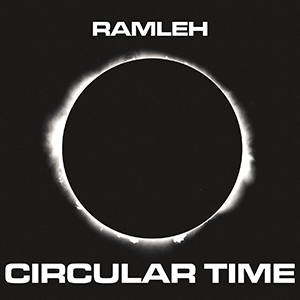 When Gary Mundy's Ramleh reemerged in 2009 after over a decade of inactivity, both the recorded output and performances were mostly skewed towards the project’s noise and power electronics history. With long time member Anthony Di Franco, the duo released the excellent Valediction album and embarked on a series of performances, updating the harsh electronic sound Mundy began as a teenager in the 1980s. Circular Time, however, is a return to the idiosyncratic psychedelic rock sound Mundy and Di Franco (along with other collaborators) fully realized in the 1990s. I have enjoyed every variant of Ramleh that I have heard, but I always had a soft spot for this more musical era and, thankfully, Circular Time is a return to form in every possible way.
When Gary Mundy's Ramleh reemerged in 2009 after over a decade of inactivity, both the recorded output and performances were mostly skewed towards the project’s noise and power electronics history. With long time member Anthony Di Franco, the duo released the excellent Valediction album and embarked on a series of performances, updating the harsh electronic sound Mundy began as a teenager in the 1980s. Circular Time, however, is a return to the idiosyncratic psychedelic rock sound Mundy and Di Franco (along with other collaborators) fully realized in the 1990s. I have enjoyed every variant of Ramleh that I have heard, but I always had a soft spot for this more musical era and, thankfully, Circular Time is a return to form in every possible way.
The 2000s incarnation of Ramleh did not totally abandon their more conventional moments, however.Also in 2009, the 10" of Switch Hitter/The Machines of Infinite Joy was released, to somewhat less acclaim."Switch Hitter" had most of the standard Ramleh sound, but with an almost too traditional sound structurally, with the sound teetering towards far less unique hard rock sounds.The instrumental b-side, however, was more faithful to the band's previous work.The line-up on this double album (just shy of two hours of material) is the same as that single:Mundy on guitar and vocals, Di Franco on bass, and Mundy’s Breathless bandmate Martyn Watts on drums.This time, however, the music contained within touches on all facets of the project’s guitar-centric incarnation.
The opening acoustic strums of "Re-Entry" are at first unexpected, but the humming feedback that punctuates the mix soon takes over, resulting in a fully blown-out bass lead and pummeling, insistent drums.It does not take too long before that aggressive, but loose and improvised sound from the Shooters Hill (half of Works III) album shines through.Mundy's pained, barely controlled guitar tone emanates from the mix as the juggernaut of a rhythm section decimates all around."Incubator" continues, but with the addition of almost 1970s hard rock guitar soloing deep in the mix: an oddly clean and delicate sound compared to the remainder of the mix, which sounds as if it is on the verge of collapse for the song’s six minute duration.
The vaguely blues influenced opening to "American Womanhood" is comparably much more spacious and less oppressive than the two preceding pieces.With Mundy's clean, improvised guitar and fuzz heavy bass from Di Franco, there is more than a passing resemblance to the prog rock influence that appeared throughout the Be Careful What You Wish For album."The Ascent" features the band syncing together in similar complexity, with Watt’s drumming taking on a more intricate, though no less heavy tact, as layered guitar, both dissonant and melodic, is weaved in and out of the song.
At other times, such as on "The Tower," the material stands as some of the most conventional music the project has ever done.With the spiky rhythm and stabbing guitar, shades of early Public Image Ltd. are hard to ignore, and it is one of the few vocal pieces on this set, though like most Ramleh, they are anything but emphasized.These less challenging moments are easily balanced by some of the record's more difficult ones, such as the expansive wall of guitar and pummeling, complex drum rolls of "Renaissance Warfare."With the multilayered guitar and a bass tone that verges on a dull roar of distortion not far removed from their noise work, the entirety piece lies somewhere between structured music and chaotic noise.Both "Entropy" and "Weird Tyranny" are drumless, atmospheric compositions of droning bass and feedback-laden guitar, never too harsh though, and call to mind similar pieces on Homeless.
The final song, "Never Returner," makes for the perfect conclusion for the album.Di Franco's fuzzed out bass, Watts pounding out a nuanced but slower rhythm, and Mundy's guitar generating both beautiful melodies and ugly squalls of noise captures everything that makes this album (and Ramleh) so exceptionally brilliant.If it were not for the comparably cleaner production (which is a characteristic of this entire record), I could easily have thought it a song that was left off of Works III, complete with the strained, depressive vocals.The bit of acoustic guitar that closes the song perfectly ties it back to the opening of disc one, as well.
Everything and anything I could have hoped for on a new release from Ramleh can be found on Circular Time.The perverse psychedelia, the motorik rhythms, and the oppressive, noise heavy ambience all appears here, and hangs strongly with the band’s previous records.I do wish there were a few more vocal tracks, as Mundy's vocals, as well as Consumer Electronics member Philip Best's (a staple of the band's 1990s output that is not on this record, but has performed with the band in recent years) were consistent on my favorite songs from the era.That makes for a minor gripe, however, because this album just perfectly encapsulates everything I have loved about the band, and with an unquestionable freshness and sense of invigoration.Without a doubt on my short list for best albums I have heard this year.
samples:
 
Read More
- Administrator
- Albums and Singles

City of Brides is the third full-length album by En, the Bay Area-based duo of multi-instrumentalists Maxwell August Croy and James Devane. It was recorded over the last few years in a variety of contexts and follows upon 2012’s well-received Already Gone, further developing the diverse sonic palette of that record. Across four sides, the pair present exotic, transportive, and richly detailed pieces that toe the line between ecstatic longform ambience and elegant, structured electronic composition. As always with En’s output, the koto is a focal point, its distinctive tone ringing out amidst the hazy guitar, vocal, and synthesis environments that surround it. The material on the record ranges from moody to celestial, from cool to white hot. Pieces such as "Blonde is Back" and "Mendocino Nature Rave" merge sizzling modular synth lacework with plaintive, familiar drone clouds to rapturous ends, while the two-part "Songs For Diminished Lovemaking" sequence charts a more minimal and nostalgic course. With City of Brides, we’re pleased to present En’s most realized and defining statement to date, a welcome addition to the ever-expanding and fertile topography of American West Coast drone music. Artwork by Justin Almquist.
More information can be found here.
Read More
- Administrator
- Albums and Singles

Most people got to know Apparat through his albums Walls and The Devil´s Walk and don't know much about his electronic music dating back to just after the turn of the millennium. In his early twenties at the time, Apparat created an autonomous, radical sound universe on those albums that even today has just as fascinating an effect on its listeners as it did back then. Shitkatapult is now bringing the three albums together in a beautifully rendered special edition. Produced between 2001 and 2003, the music has been painstakingly remastered by Mike Grinser.
More information can be found here.
Read More
- Administrator
- Albums and Singles

Hugely sought-after techno classic - the precedent to Butterfly Effect, originally released on Berlin’s legendary Chain Reaction and out-of-print for 15 years, now newly remastered from vinyl by Matt Colton at Alchemy. A massive personal favourite of Demdike Stare's, Shinichi Atobe's Ship-Scope was Chain Reaction's penultimate release in 2001 and, with the benefit of hindsight, also one of the legendary label's most sublime offerings.
Phase fwd to 2015 and DDS rightly put it back into circulation with this necessary reissue arriving in the wake of Atobe's much loved archival salvage, Butterfly Effect, which caused quite a ripple in late 2014.
Notable not only for its unusually sweeter, dreamier ambient tone - especially when compared with the rest of the CR#'s - but also for its happily lost-at-sea feel, connoting a deeply romantic and almost shoegazy late '90s / into-the-'00s deep techno aesthetic that would essentially become washed away with the advent and normalisation of mnml techno's pristine production values.
-via Boomkat
Read More
- Administrator
- Albums and Singles
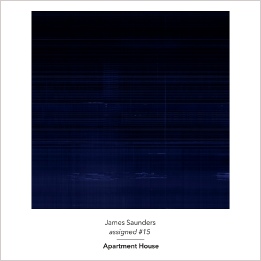 James Saunders spent close to a decade working on his #[unassigned] series. Comprising 175 variations of modular compositions for solo instruments, the project was designed to emphasize unique instrumentation, techniques, and spaces. Repetition was anathema and multiplicity prized—once performed, each arrangement would then be set aside in favor of the next configuration, never to be played again. The UK-based multinational ensemble Apartment House were the first to try an #[unassigned] composition in 2000 and they executed several different versions afterward, until the project was concluded in 2009. With assigned #15, they return to Saunders’s work, now presented as re-performable composition scored for seven musicians who play, among other things, viola, chamber organ, dictaphone, and shortwave radio.
James Saunders spent close to a decade working on his #[unassigned] series. Comprising 175 variations of modular compositions for solo instruments, the project was designed to emphasize unique instrumentation, techniques, and spaces. Repetition was anathema and multiplicity prized—once performed, each arrangement would then be set aside in favor of the next configuration, never to be played again. The UK-based multinational ensemble Apartment House were the first to try an #[unassigned] composition in 2000 and they executed several different versions afterward, until the project was concluded in 2009. With assigned #15, they return to Saunders’s work, now presented as re-performable composition scored for seven musicians who play, among other things, viola, chamber organ, dictaphone, and shortwave radio.
There’s a trace of contradiction in the idea of a once-performed composition. Composing usually entails repetition, regardless of whether variables are introduced to the score. It’s an activity that, either accidentally or purposefully, preserves a number of materials and actions for future use. Even something like John Cage’s Variations II, which requires its interpreter to arrange and measure a series of 11 transparent sheets in almost any way at all, can be repeated, in the sense that different configurations can be saved and attempted again after the first go.
Saunders went a step further with his #[unassigned] works and filed each one away after just a single rendition. What survived between the reshufflings were the constituent parts, the instructions that guided the flute player to sustain a series of long low tones in succession, or that asked the cellist to rub his or her strings without producing a pitch. The series both privileged and minimized the roles of time and structure in music. In one way, #[unassigned] persisted as an asterism of instructions, in another it survived because those instructions were intermittently organized so that a group could recognize and perform them in relationship to one another.
With assigned #15, Saunders exhumed an old #[unassigned] variant and recorded it with Apartment House at St. Paul’s Hall in the West Yorkshire town of Huddersfield. In an interview on the Another Timbre website, James says that he returned to this material because he wanted "explore the beauty of sound again," versus focusing on the processes that produce such sound. assigned #15, then, is music frozen into a particular shape.
It’s a decent image for what the album sounds like: a dense, opaque block of ice shaking under internal pressures. A constant machine-like drone rumbles throughout the piece, its source not easy to determine. It could come from the chamber organ, but it might be the product of the dictaphones and shortwave radio too. Similarly, some of the tapping, rhythmic sounds could be traced back to string instruments or they could as easily belong to the percussion section.
Bowed metal, quickly struck piano keys, scratch tones, rattling chains, and piercing train-whistle whines also find a place in the music. They move in and around each other with such ease that it’s hard to find where one section ends and the next begins, and that contributes to the performance’s heaviness. All of the softer sounds, like the fragile string and flute interaction in the album’s second half, congeal with the rougher-edged, glass-on-sandpaper textures, forming a tight grid of noise that never loosens, even as the work winds down and the chamber organ hums in relative isolation. The piece changes over time, but it never seems to move forward. Instead, it spins in place, or spins and simultaneously revolves. Different facets reflect off its surface as it moves through different positions, but its insides are always hidden. The music may be frozen in its course now, but the sound travels forward anyway, with or without the composer’s dispensation.
samples:
Read More
- Administrator
- Albums and Singles
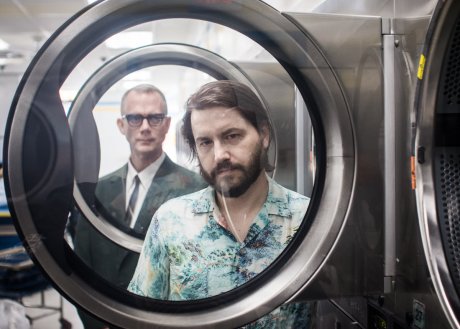
Matmos announces new album Ultimate Care II, sound-sourced entirely from a washing machine
Harvesting the machine’s chugs, drones, splashes, and clanks, Matmos has crafted a work of sly humor and dazzling artistry
Since their formation 20 years ago, driven by their abiding belief in the musical potential of sound, the duo Matmos (Drew Daniel and M.C. Schmidt) have created a wide range of imaginative recordings and live performances. In addition to releasing a string of acclaimed electronic music albums, they have played the uterus and reproductive tract of a cow at the San Francisco Art Institute, canisters of helium at Radio City Music Hall while opening for Bjork, and John Cage’s personal collection of conch shells at Carnegie Hall. Their forthcoming album Ultimate Care II perfectly reveals their artistry; they made it entirely out of the sounds generated by a Whirlpool Ultimate Care II model washing machine in the basement of their home in Baltimore, Maryland.
Harvesting the machine’s rich vocabulary of rhythmic chugs, spin cycle drones, rinse cycle splashes, metallic clanks and electronic beeps, Matmos have crafted a work of sly humor in which one of the quintessential sounds of everyday life is transformed into an unlikely source for a surprisingly listenable suite of music. Dan Deacon, Max Eilbacher and Sam Haberman of Horse Lords, Jason Willett (Half Japanese), and Duncan Moore (Needle Gun) all took part, either playing the machine like a drum, processing its audio, or sending MIDI data to the duo’s samplers. The result is a suite of rhythmic, melodic and drone-based compositions that morph dramatically, but remain fanatically centered upon their single, original sound source. Ultimate Care II swirls with perverse paradox: it is at once funny and sad, bouncy and creepy, liquid and mechanical.
Ultimate Care II will be released on February 19, 2016.
More information will eventually be found here.
Read More

